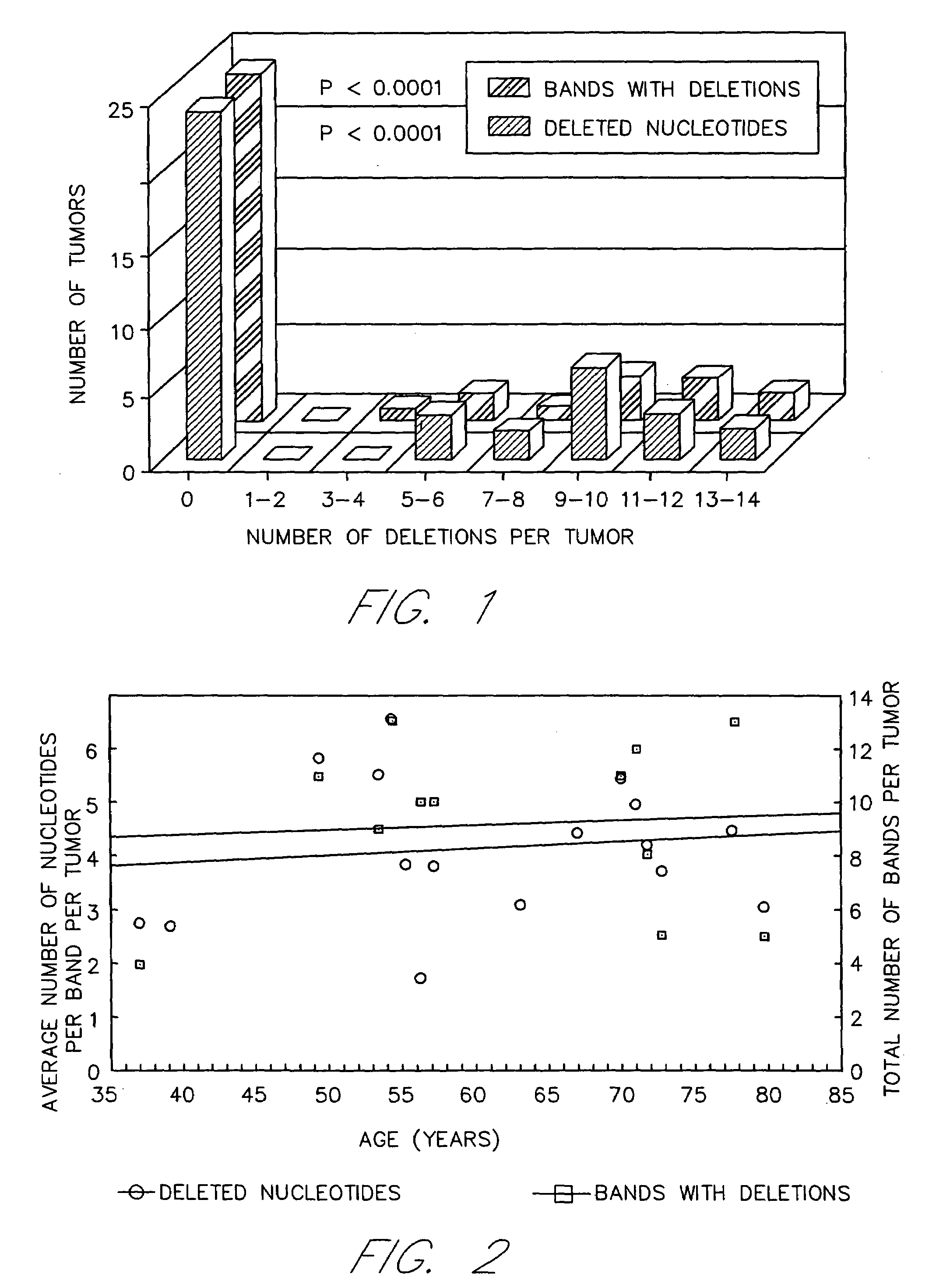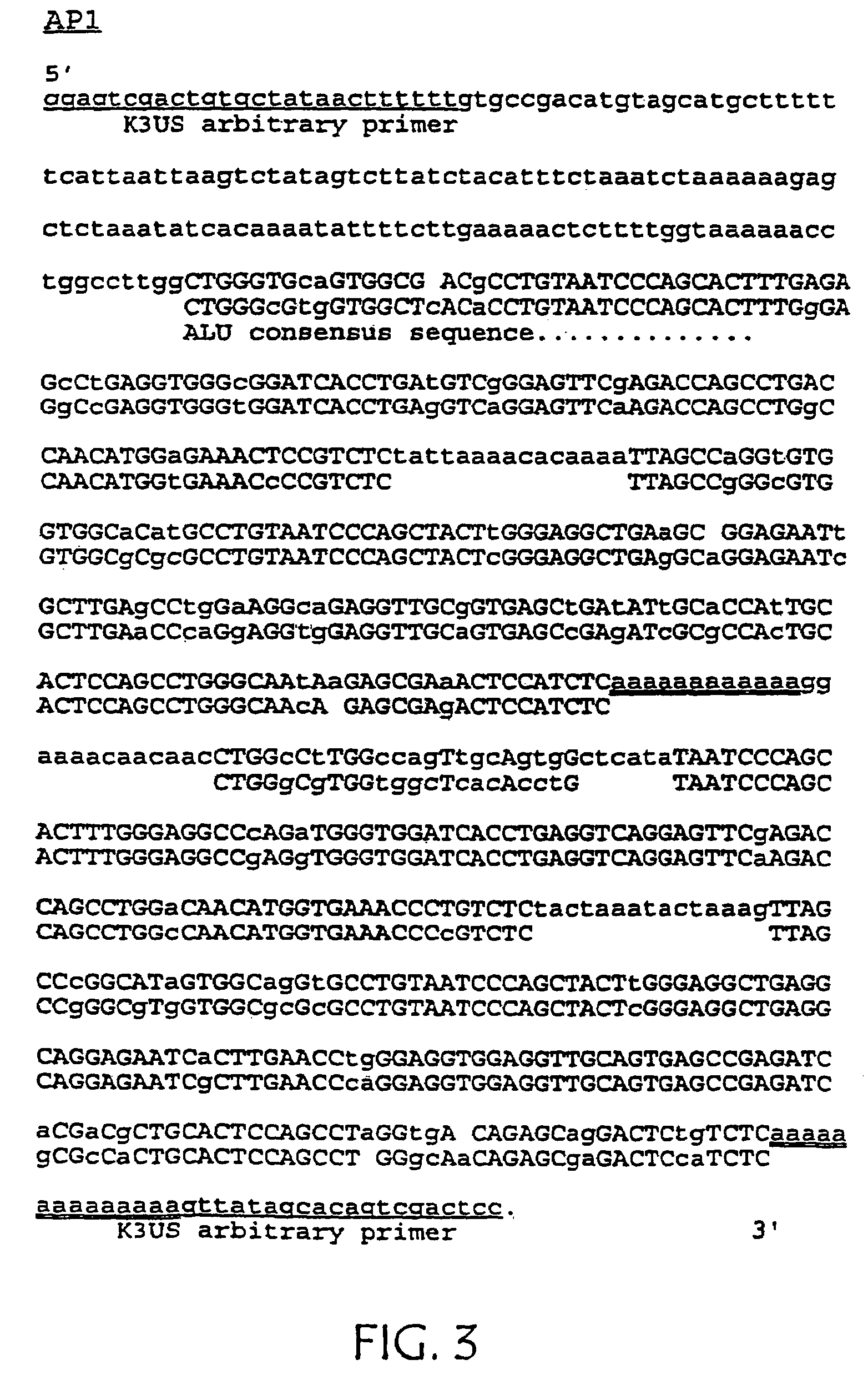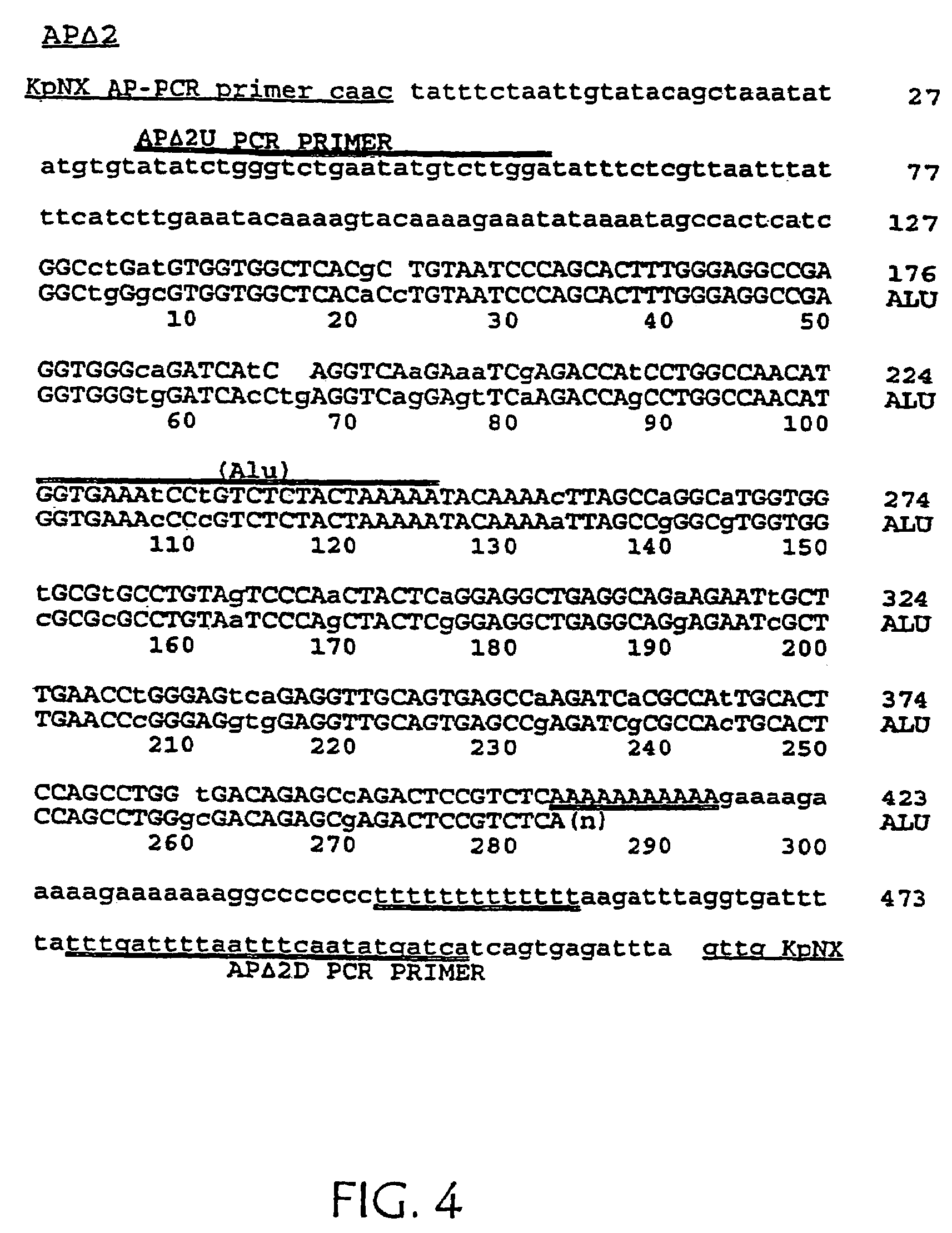Identification of neoplasms by detection of genetic insertions and deletions
- Summary
- Abstract
- Description
- Claims
- Application Information
AI Technical Summary
Benefits of technology
Problems solved by technology
Method used
Image
Examples
example 1
AP-PCR to Identify Deletions in Sequences of DNA from Tumorigenic Tissue.
[0062]A panel of 139 paired samples of tumor tissue and normal tissue from the same patient were processed to isolate genomic DNA using the methods disclosed by Nakano, et al. (1984) Proc. Natl. Acad. Sci. USA 81:71–75. Normal and tumor tissues were analyzed using two different DNA concentrations (50 and 20 ng). AP-PCR reactions were performed with 125 μm of each deoxynucleotide, 2 μm arbitrary primers, 5 μCi α-35S-dATP or 1 μCi α-32P-dCTP (New England Nuclear, Boston, Mass.) and 2 units of Taq polymerase (Cetus / Perkin Elmer or Stratagene) in the PCR buffer disclosed in Example 4 below. The arbitrary primers used to identify the deletion-associated sequences are listed as sequences A through J below. The reaction consisted of 5 low-stringency cycles (usually 1 minute at 95° C., 1 minute at 50° C., 1.5 minutes at 72° C.) and 30 high stringency cycles (usually 30 seconds at 95° C., 30 seconds at 60° C., 1.5 minut...
example 2
Identification of Deletion-Containing Sequences and Normal Flanking Sequences
[0070]The deletion-containing sequences identified using the Arbitrarily Primed-PCR methods disclosed above were subjected to PCR using the primers used for arbitrarily primed PCR that additionally have a convenient restriction endonuclease site such as EcoRI extending from the 5′ end of the primer. The PCR conditions and reagents are described and provided in the PCR kits available from Stratagene (La Jolla, Calif.). Sequences amplified in the PCR reaction, now containing Eco RI restriction endonuclease sites are extracted with phenol / chloroform and digested with Eco RI and inserted into a vector suitable for DNA sequencing. In this example, the inserts are ligated to pbluescript II SK + / − that was previously digested with Eco RI. Following ligation, the mixture is introduced into competent XL1-blue E. coli available from Stratagene, following the transformation protocol included with the bacteria. The tra...
example 3
Identification of Insertions and Deletions in Tumor Tissue
[0071]Somatic mutations are also abundant in SRS other than monotonic runs of da:dT base pairs in the USM+ tumors. These sequences are the di- and trinucleotide repeats or microsatellites. The mutations in these microsatellites are deletions as in the poly A sequences; however, insertions of one or a few nucleotides also occur.
[0072]Several colon carcinoma tumor cell lines were identified which exhibited USM in SRS by AP-PCR and PCR experiments with APΔ1, APΔ2 and APΔ3 sequences. A description of the analysis of the mutation rates for SRS in these tumor cell lines is described below.
[0073]Single cell clones were isolated from the colon tumor cell lines LS180 and LS174T (ATCC) using cloning cylinders and grown in mass culture. After 25–50 generations, single cell clones were again isolated in 96 well microtiter plates at increasing dilutions, such that about 30–50% of the wells contained cells. Double cell clones were eliminat...
PUM
 Login to View More
Login to View More Abstract
Description
Claims
Application Information
 Login to View More
Login to View More - R&D
- Intellectual Property
- Life Sciences
- Materials
- Tech Scout
- Unparalleled Data Quality
- Higher Quality Content
- 60% Fewer Hallucinations
Browse by: Latest US Patents, China's latest patents, Technical Efficacy Thesaurus, Application Domain, Technology Topic, Popular Technical Reports.
© 2025 PatSnap. All rights reserved.Legal|Privacy policy|Modern Slavery Act Transparency Statement|Sitemap|About US| Contact US: help@patsnap.com



